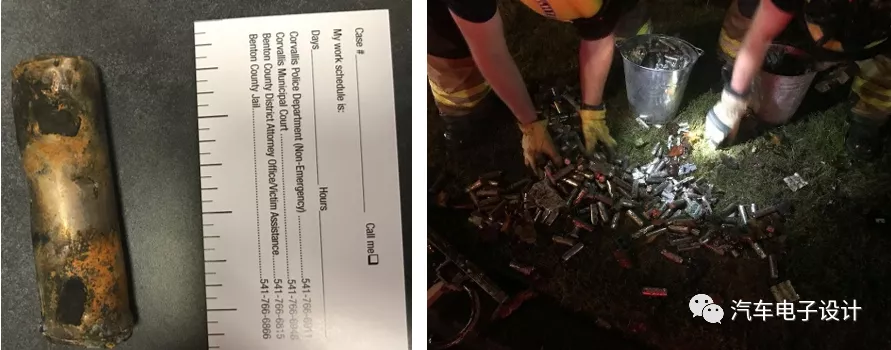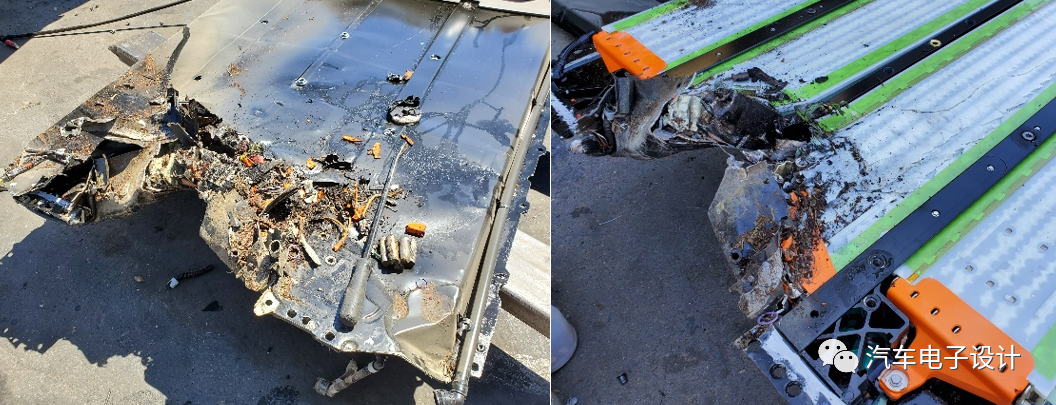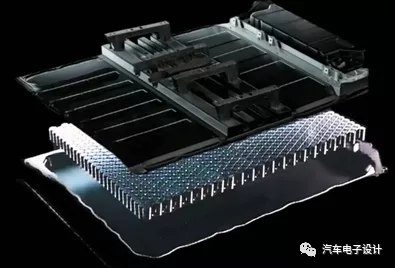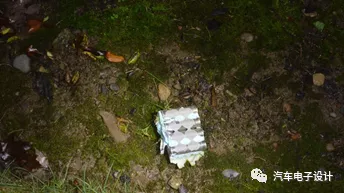Introduction
Recently, the attention and discussion of cylindrical batteries have been extended to various enterprises. In the KABC of SNE, SDI also talked about the research on new cylindrical battery cells in the future, including cost-reducing strategies for different chemical systems.
Model 3 Battery Decomposition after Collision
Last week, a Model 3 accident occurred in Oregon, USA. The driver broke a power line pole and then collided with two trees, resulting in the entire battery system being dispersed and dismantled as shown below.

The most striking features are:
1) Cylindrical battery cells similar to the split fuel tank scattered from the battery pack, causing a thermal runaway that flew into nearby houses and caused fires. Even the battery cells hit the leg of the homeowner.

2) Amazingly, the wreckage of the car was not burned, and the remaining batteries did not ignite in groups.

Like last year’s accident, after the battery system was invaded, the partial thermal runaway of the battery cells occurred. Through effective isolation, there was no overall ignition. If the invasion destroyed the integrity of the structure, the battery would be separated, but the inside of the car was safe. We can assume that if the same energy falls on the large cell casing or on the soft pack, the car will quickly catch fire.

Why Revisit Cylindrical Batteries
Tesla has reduced the probability of self-ignition in nearly 1 million Model 3/Model Y by one order of magnitude. The burning accidents that have occurred mainly include:
On August 10, 2019, a Tesla Model 3 collided with a truck on a highway in Moscow, Russia, and was burned later.
In 2020, a Model 3 in Jiangxi had an accident and caught fire after the owner failed to brake.And recently, the accident in Oregon, USA, where the electric vehicle collided with a pole at high speed and the entire battery flew out without causing a large-scale fire, is also remarkable.
In a sense, studying cylindrical batteries means encountering problems at the PPM level, and there haven’t been many cases of thermal runaway incidents during collisions, which is the main reason. For the next upgrade and iteration, if we need to address the core issues from Cell to Chassis, we should consider:
1) Whether a single battery experiencing thermal runaway can prevent it from spreading and continue to function by effectively disconnecting it.
2) Whether batteries can be effectively protected and prevented from ejecting during severe collisions.
3) Whether the battery protection structure will be damaged after minor collisions.
In my opinion, small-capacity batteries are the basis for highly integrated systems, and if we use large-capacity batteries, once an individual cell malfunctions and triggers the entire series, it will require a lot of effort to control. Moreover, repairing it is a major problem.
The most critical point is, what will happen if a frontal and bottom impact, similar to energy, directly hits the bottom of the battery and destroys the protection system, especially in the case of CTP mode, where the structure between cells relies more on the protective system of the Pack, and the module structure is relatively weak? The state of a large cylindrical battery the size of a brick that flies out after such an impact can also be troublesome.

Conclusion
Currently, many companies are re-evaluating the use of cylindrical batteries, and as the United States introduces a new wave of pure electric pickup trucks, there will be different approaches based on large-capacity cylindrical batteries.
This article is a translation by ChatGPT of a Chinese report from 42HOW. If you have any questions about it, please email bd@42how.com.
